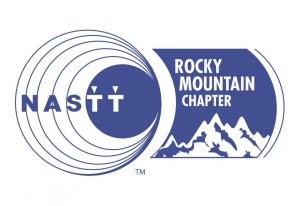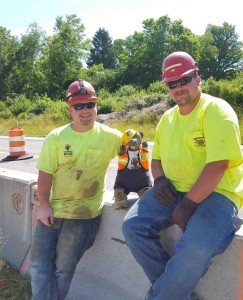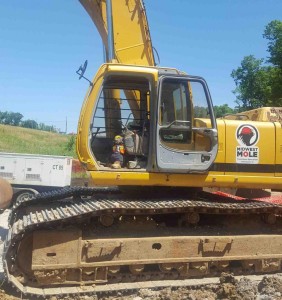Uncategorized
An agile, interactive, and informative site detailing the world’s leading drilling technology.
THOMPSON, CONNECTICUT USA, June 15, 2016– Numa, the leading designer and manufacturer of DTH hammers and bits, has launched a new website (www.numahammers.com) to provide viewers with the most agile, interactive, and informative site detailing the world’s leading drilling technology. The new website is designed to provide the ultimate user-friendly experience with improved navigation and functionality throughout, allowing customers to not only access detailed product information but also gain insight into the value Numa provides to drillers around the world.
Numa President Ralph Leonard commented, “Numa became a leader in DTH by standing behind our people, products and performance. This commitment gives our customers the peace of mind that we’ll always be there with the industry’s best performing, most reliable products and the industry’s best service and support. Our redesigned site further reinforces these values by giving direct insight into how we provide the highest value in products, performance and service.”
A main goal of the redesign was to help viewers get to know Numa better and get a feel for who we are as a company. The scroll friendly, responsive design allows viewers to gain quick access to Numa’s complete range of DTH products, technical support, drilling project summaries, latest news, industry events, regional sales reps, and current web specials. In addition, a new infographic found on the About Us page helps to quickly convey relevant information about our key strengths.
Created with the user experience firmly in mind, the website is designed using the latest technology so the site is compatible with today’s browsers and mobile devices. This means viewers see essentially the same design optimized for your smart phone, tablet and desktop.
Check out Numa’s new website today at www.numahammers.com
ABOUT NUMA
Numa is the world’s leading designer of rock drilling equipment with over 100 DTH Hammer and Bit products serving 11 different industries. Our products are capable of drilling vertical, horizontal, and reverse circulation holes from 3½ to 48 inches (89 – 1,219 mm) in diameter and are used in 105+ countries. We have built our customer-centric reputation on providing the highest value in products, performance and personal service available in the rock drilling marketplace.
Uncategorized
The Rocky Mountain Chapter of the North American Society for Trenchless Technology
 (NASTT) was formed in 2009 to promote the education and implementation of trenchless technology for the public interest throughout the states of Colorado, Montana, Utah, and Wyoming.
(NASTT) was formed in 2009 to promote the education and implementation of trenchless technology for the public interest throughout the states of Colorado, Montana, Utah, and Wyoming.
One way the Rocky Mountain Chapter will bring trenchless education to its region this year is with Trenchless Elevated 2016, a two-day conference at the Utah Cultural Celebration Center in West Valley City/Salt Lake City, Utah, Oct. 5-6.
“We came up with Trenchless Elevated for this year’s theme because we thought it was a great way to illustrate how trenchless technology is protecting the majestic environment above the ground while restoring the infrastructure below,” says Patrick Laidlaw, member of NASTT’s Rocky Mountain Chapter Conference Committee and Regional Sales Manager for Underground Solutions, Inc.
This conference gives municipal/utility staff, contractors and engineers the chance to get together with like-minded professionals, visit trenchless exhibits, and learn the benefits and best practices of trenchless methods for the new installation of pipelines and rehabilitation of existing pipelines.
For information about exhibit/sponsorship opportunities, contact Brittany Maurer at bmaurer@benjaminmedia.com. For general information about the show, visit www.trenchlesselevated.com.
Uncategorized
Mortimer the Sewer Rat was adopted earlier this year during NASTT’s 15th Annual Educational
 Fund Auction by the generous folks at Midwest Mole!
Fund Auction by the generous folks at Midwest Mole!
He has been on the I-69 Section 5 project with them in the Bloomington, IN area. In Indiana’s first public/private project, Section 5 consisted of 21 miles of SR 37 to be rehabilitated and upgraded in Morgan and Monroe counties.
Midwest Mole Inc was contracted in June 2015 to do the bores under the highway. Over 86 bores sizes 24” and 30” have been completed. This includes the relocation of the fiber optic lines for the IU campus. An SBU was brought in to bore through the rock portions.
Stay tuned for more updates on Mortimer during his year with Midwest Mole!
Uncategorized
| When: August 15-19, 2016 (Mon-Fri)
Where: Ruston, LA (Louisiana Tech Campus)
What:
An intensive 5-day course will provide the knowledge and tools for competent utility investigations in accordance with accepted national standards.
The course will cover, all in the context of ASCE-38, utility system configurations, geophysics for finding utilities, proper records research, achieving utility quality levels, project documentation, and more.
Cost:
EARLY BIRD June 1 – July 15, 2016 $1,445
REGULAR FEE After July 15, 2016 $1,559
Additional 10% discount for
3 or more attendees from the same company!
Certifications:
5 CEUs and a Certificate of Completion
Who Should Attend: |
Engineers and surveyors providing deliverables that include results and depictions of utility investigations
Employees of utility companies, state DOTs and local highway agencies, regulatory agencies, local governments, etc.
Click here to register.
Jadranka Simicevic, TTC, 318-257-2744, jadranka@latech.edu
Uncategorized
Ottawa, IL (June 1, 2016)— In April, the ASTM International committee F17 , Plastic Piping
 Systems and subcommittee F17.67, Trenchless Plastic Pipeline Technology, voted to renew the ASTM F2561 standard of practice an additional five years. ASTM F2561 was first published in 2006, first renewed in 2011 and now again in 2016.
Systems and subcommittee F17.67, Trenchless Plastic Pipeline Technology, voted to renew the ASTM F2561 standard of practice an additional five years. ASTM F2561 was first published in 2006, first renewed in 2011 and now again in 2016.
ASTM F2561-16 is the standard practice for rehabilitation of a sewer service lateral and its connection to the main using a one piece main and lateral cured-in-place liner. The practice covers the requirements and test methods for the reconstruction without excavation. The lateral pipe is accessed remotely from the main pipe and from a lateral cleanout, if available. A resin impregnated one-piece main and lateral CIPP lining is installed by the use of air and inversion. The CIPP liner is pressed against the host pipe by pressurizing a bladder and is held in place until the thermoset resin has cured. The result is a verifiable non-leaking structural continuous, one piece, tight fitting, corrosion resistant connection lining and seal that extends over an 18” section of the mainline and into the lateral for a predetermined length.
LMK Technologies is one of two industry companies that provide a lining system that fully meets the ASTM F2561 standard of practice. The patented, T-Liner® Main-to-Lateral Connection System, has been installed in over 50,000 service laterals by a growing network of independent distributor-contractors based throughout the United States, Canada and Europe.
T-Liner® incorporates the use of Insignia® hydrophilic swelling gasket seals at the connection and the lateral termination. When exposed to water, the gaskets swell in 36 to 48 hours providing a verifiably sealed system, preventing water from re-entering the collection system. Other lining systems try to use the thermoset resin as the watertight solution. The ASTM F2561 ensures a water-tight solution that equals the 50 plus year design life.
“To have a prestigious body of industry experts continue to renew the ASTM F2561 standard since 2006 indicates that the T-Liner lining system provides the highest degree of quality and long term results,” according to LMK Vice-President of Sales, Rick Gage. “We continue to educate the marketplace about the need to utilize ASTM standards when developing any construction or rehabilitation project. Using an ASTM standard ensures that the rate payers and owners are getting full value for their money.”
ASTM (American Society for Testing and Materials) was established in 1898 and today has more than 12,000 ASTM standards and a membership of over 30,000 of the world’s top technical experts and business professionals representing 140 countries. Working in an open and transparent process and using ASTM’s advanced IT infrastructure, the members create the test methods, specifications, classifications, guides and practices that support industries and governments worldwide.
LMK Technologies, a world leader specializing in trenchless methods to renew lateral sewer infrastructure has more than 100 worldwide issued patents for its advancements in trenchless technology. Headquartered in Ottawa, IL since 1993, LMK serves the municipal and residential markets through a network of licensed and certified contractors. For more information regarding LMK please visit www.lmktechnologies.com, call 1-815-640-9302 or email info@lmktechnologies.com.
Uncategorized
SAN FRANCISCO–This week, the U.S. Environmental Protection Agency awarded the Navajo Nation Environmental Protection Agency $465,000 for water quality monitoring in the San Juan River.
This funding is in addition to $1 million awarded in October for water quality monitoring and ecological restoration activities throughout the Reservation.
“Funding for long-term monitoring will provide important information needed by the Navajo Nation, EPA and our other state and tribal partners to assess the San Juan River,” said Alexis Strauss, EPA’s Acting Regional Administrator for the Pacific Southwest. “We will continue to work with the affected states and tribes using sound science to monitor and understand river conditions.”
Navajo Nation will use the funds to do additional monitoring in the San Juan River, including sediment sampling and a fish tissue contaminant study. The study will monitor current contaminant levels in fish and focus on potential human health risks associated with fish consumption subsequent to the Gold King Mine release.
The EPA has allotted $2 million in grants to states and tribes to develop a better understanding of overall water quality conditions in the Animas-San Juan Basin following the Gold King Mine release.
This funding supports Navajo’s monitoring efforts to meet their data needs and to gather a robust set of data that can be compared to longer-term monitoring results of EPA and other tribes and states in the San Juan River basin. EPA’s long-term monitoring plan is available on the EPA Gold King Mine website.
For more information, please visit: https://www.epa.gov/goldkingmine





